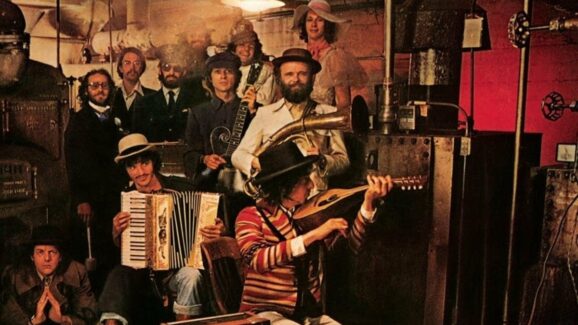 Back in the 1980’s, Lucy Kaplansky was a major force in the Greenwich Village folk scene (sometimes known as the “Fast Folk” crowd), that would launch the careers of Suzanne Vega, Richard Shindell, John Gorka, Christine Lavin and Shawn Colvin. In fact, Kaplansky played often with Colvin as a duo, but when they were offered a major label contract, she rejected it and turned instead to pursue a PhD in clinical psychology from Yeshiva University. As she read texts by Freud, Jung and Festinger, Suzanne Vega and Shawn Colvin sold out major tours across North America and Europe, logged millions in album sales and even won a few Grammy awards. Not to say that Kaplansky’s decision was misguided; however, it in many ways reflects the trajectory of her career and the seriousness with which she approaches her craft.
Back in the 1980’s, Lucy Kaplansky was a major force in the Greenwich Village folk scene (sometimes known as the “Fast Folk” crowd), that would launch the careers of Suzanne Vega, Richard Shindell, John Gorka, Christine Lavin and Shawn Colvin. In fact, Kaplansky played often with Colvin as a duo, but when they were offered a major label contract, she rejected it and turned instead to pursue a PhD in clinical psychology from Yeshiva University. As she read texts by Freud, Jung and Festinger, Suzanne Vega and Shawn Colvin sold out major tours across North America and Europe, logged millions in album sales and even won a few Grammy awards. Not to say that Kaplansky’s decision was misguided; however, it in many ways reflects the trajectory of her career and the seriousness with which she approaches her craft.
In the 1990’s, Kaplansky released three albums that were fairly well received and highlighted her facility in writing melodic, absorbing folk songs. And in 1998, she joined with musical heavyweights Richard Shindell and Dar Williams to form folk supergroup Cry Cry Cry. Their eponymous record featured mostly cover songs of other influential Americana/rock/folk singer-songwriters such as REM, Greg Brown, Ron Sexsmith and Julie Miller. Since then, Kaplansky’s studio work has been erratic, but in 2010 she developed another supergroup called Red Horse with John Gorka and Eliza Gilkyson. Even though she may have missed out on a highly lucrative duo career with Shawn Colvin, Kaplansky has certainly accumulated quite the folk pedigree.
Even so, there’s something that just doesn’t quite fully connect about Kaplansky’s approach to performance, which became fairly visible at her recent show at Berkeley’s wonderful Freight & Salvage Coffeehouse. She uses the same tools as her colleagues– a weathered acoustic guitar (very occasionally electric) and soulful, stark block piano chords– but where others’ personality is winsome and engaging, Kaplansky comes across as solemn and at times even severe. In between songs she does provide plenty of stage banter, but where others may make a few jokes or work in a judicious amount of self-deprecation, Kaplansky seems to come close to doing that but then cuts short, which in turn paints her as probably more deadpan than she really is. And obviously some artists do very little audience interaction during their sets (PJ Harvey comes to mind), but they then usually amplify the drama and intrigue within the music. With the majority of Kaplansky’s work, there aren’t major dynamic shifts or the sort of earnestness, desperation or foot-tapping, catchy choruses that would substitute. And 20+ years into her career, it doesn’t appear that she’s that interested in changing things in an appreciable way that might re-establish her as a central force in the folk community.
Still, Lucy Kaplansky has a well-honed grasp on melody, which is something almost impossible to teach and reveals her deeply rooted and intuitive musicianship. Songs like “Manhattan Moon,” “Scorpion” and “Ten Year Night,” all of which she performed to great applause, have spectacular choruses with melodies that soar over familiar chord structures. They’re also the ones in which she decisively invests more energy and intention– perhaps because the lyrics are astute and personal and the constructions more meaty. They’d be gems in the catalog of any singer-songwriter worth their salt, and they came across as genuine and sincere at the show.
Lucy Kaplansky’s strong musicality is even further enhanced by her supreme ear for harmony. In countless folk albums from the 1990s, Kaplansky’s backup vocals considerably augmented the original framework of the songs, indicating her skill at complementing others’ tone and design. And in her collaborations with supergroups Cry Cry Cry and Red Horse, she provides, as a harmony singer, a depth and richness to the overall sound that really benefits the entire work. However, where she profits from producing excellent harmony she fumbles as a lead singer. Her voice gains a nasal quality that strays from the resonance she has as a backup vocalist. Also, there’s a palpable meekness and tame quality to her approach with holding the lead, so, while she does add substantially to her group participation, she struggles with maintaining the sole focus of an audience.
It’s important to mention Kaplansky’s instrumental guest, Nina Garber, who played some of the most expressive and deliciously restrained electric guitar lines above and between the majority of the set’s tracks. Her keen insight into Kaplansky’s songs and her attenuation to the emotional landscape was sensational. When Lucy dug in and hit hard, Garber backed off, and when Lucy faltered, Garber’s riffs and improvs sustained the piece. While Kaplansky may not be the most dynamic or gripping frontwoman, she can be an incredible side-musician, and thankfully she brought along someone with the same capability for the Berkeley show, which definitely rescued many moments throughout the two sets of music. Still, Kaplansky’s seriousness and austerity, matched with a few uninspired new songs, made it a long evening, and one whose highlights were frustratingly weighed down by filler.












